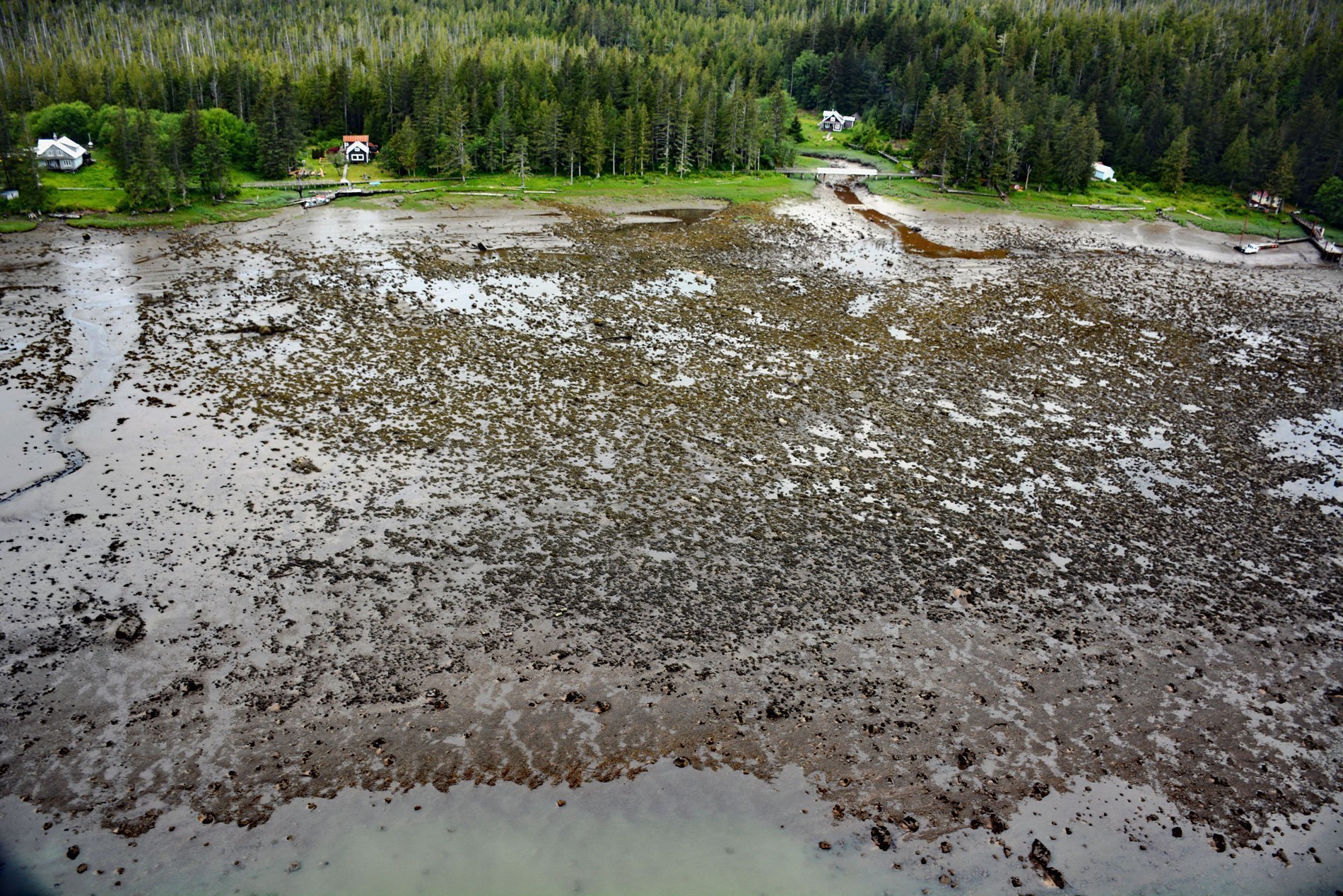Osland was once an active fishing and boatbuilding community on the east coast of Smith Island at the mouth of the Skeena River, about 68 miles (109 km) southwest of Terrace and 14 miles (23 km) south-southeast of Prince Rupert, British Columbia. The community is at the north end of De Horsey Passage, a narrow tidal channel between Smith Island to the west and De Horsey Island to the east, that connects with Inverness Passage and the mainstem of the Skeena River, putting the community close to the canneries and railway connections to Prince Rupert. The geology of southern Smith Island consists of Late Cretaceous igneous intrusions of quartz diorite and granodiorite. The northern portion of the island along Inverness Passage consists of rocks in the Gravina Belt represented by sandstone, conglomerate, and shale that formed from turbidite deposits in a deep ocean trench between the Jurassic and Early Cretaceous periods.
Osland was founded by a group of Icelandic-Canadians, most of whom came to the coast from Manitoba Icelandic communities in Winnipeg, Gimli, Selkirk, Lundar, and Steep Rock. The first settlers came around 1912 or 1913 and more joined them during and after World War II. The community grew in the 1920s to a peak population of 90. The main occupation was fishing, and in the days of sailboat gillnetting, most people worked for the Cassiar Cannery, which was closest. By the mid-1920s when gas-powered boats were permitted, they started fishing for other canneries. Some continued to use cannery gas boats while others fished with their own boats. There were three docks at Osland, including the Imperial Oil dock and float used in the summer to supply the fish packers and gillnet fleet, the community float that went dry at low tide, and the government wharf that could accommodate boats at any hour.
Osland had an excellent reputation for quality boatbuilding. The first recorded boat to be built at Osland was Iceland, built by Johannes (Joe) Laurusson in 1920. George Philippson built a troller at North Pacific Cannery in 1928 and Julia at Osland in 1931. His brother, Oli Philippson was long associated with the North Pacific Cannery, where he was a fisherman and winter watchman. The Great Depression of the 1930s caused many families to move away, leaving the one-room school in jeopardy of closing. A number of Japanese families were encouraged to move to Osland from the canneries. One of these was the Sakamoto family who moved from North Pacific Cannery to Osland in 1931 and ran a boatbuilding shop until they were interned during World War II. Read more here and here. Explore more of Osland and Smith Island here:

